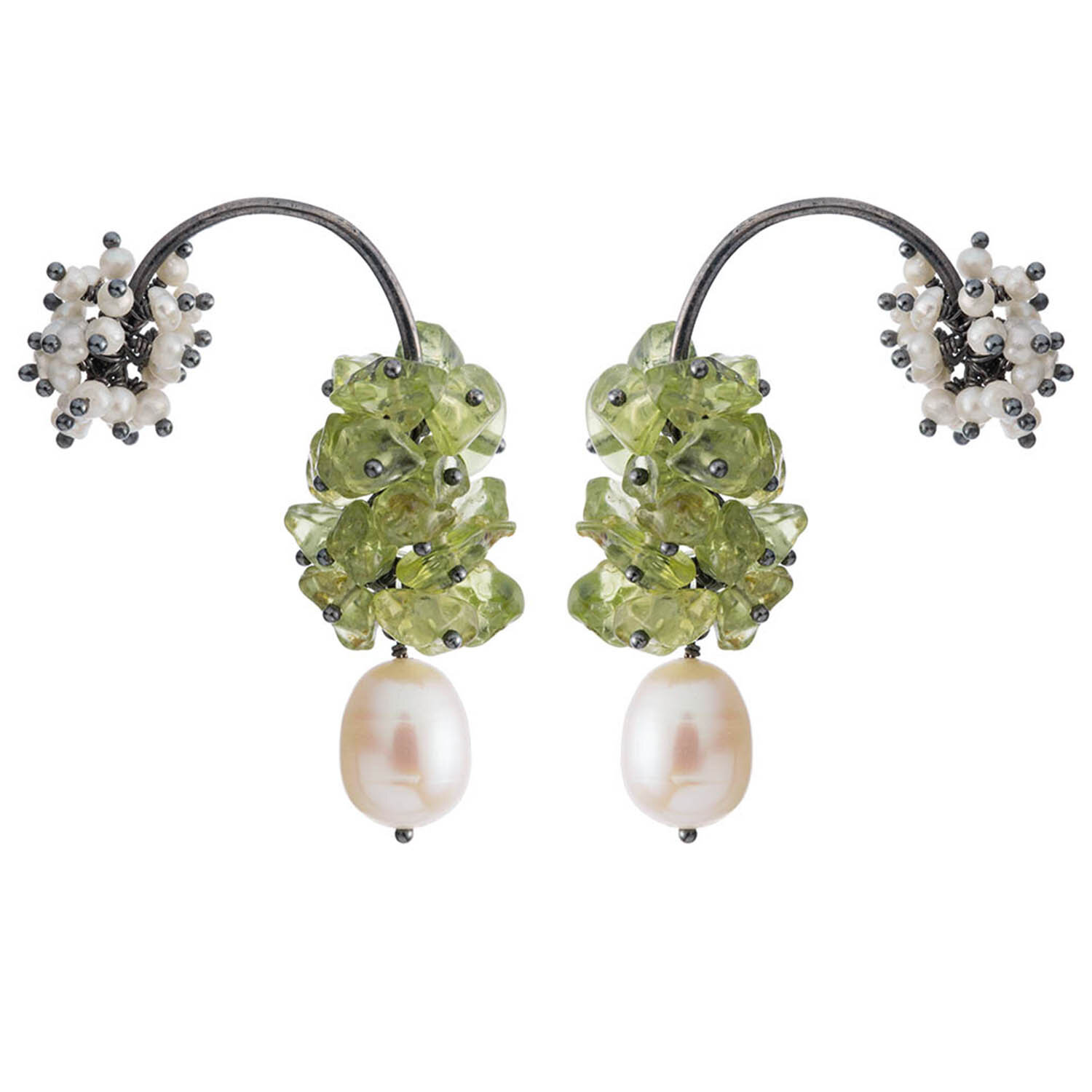Gemstone Spotlight: Peridot - Earth’s Green Flame
A collection of tumble polished peridot beads. Photo credit: Michelle Pajak-Reynolds
Peridot History and Lore
With a hue as vivid as spring’s first unfurling leaves and the crisp sweetness of green apples, peridot has captivated hearts for millennia. Its name—peridot (pronounced PAIR-uh-doe or PAIR-uh-dot)—is thought to stem from the Arabic word faridat, meaning “gem,” and the stone has lived up to that legacy in cultures across continents and centuries.
To the ancient Egyptians, peridot was the “gem of the sun,” a radiant talisman believed to ward off nightmares, soothe troubled minds, and bring abundance to those who wore it close. Mined under the shimmer of moonlight on the island of Topazios (modern-day Zabargad), peridot was so precious it was kept secret, reserved solely for pharaohs and royalty. The mine itself vanished into myth until it was rediscovered in 1905—though its finest treasures had long since been claimed.
In Hawaiian lore, peridot holds a more fiery origin. Found glinting in the sands of Papakōlea Beach—one of only four green sand beaches in the world—these tiny gems are believed to be the crystalline tears of Pele, the goddess of fire and volcanoes. Islanders sometimes call them “Hawaiian Diamonds,” a poetic nod to their fierce and sacred beauty.
Once the traditional birthstone for September and Libra, peridot now glows as August’s modern birthstone and is a cherished gift for 16th wedding anniversaries—an emblem of love’s enduring light.
Origins and Gemology
Peridot is the gem-quality variety of olivine, a mineral forged not in the Earth’s crust, like most gemstones, but deep within its mantle. Alongside diamond, it is one of the only two gems born of molten rock from our planet’s fiery heart, carried to the surface through volcanic eruptions and tectonic upheavals. In rare instances, peridot arrives to us not from this world, but from the stars—encased in ancient meteorites that fell from the heavens.
Slice of meteorite containing traces of the mineral olivine. Peridot is the gemstone quality form of olivine. Photo credit: Michelle Pajak-Reynolds
Its color palette ranges from golden lime to the deep green of moss after rain, with iron content influencing the saturation and hue. The purest specimens glow with a vibrant green untouched by brown or yellow undertones—a color as alive as the landscapes they emerge from.
While Egypt’s storied mines have been depleted, peridot continues to be unearthed in Myanmar, Pakistan, Sri Lanka, Kenya, China, and the United States. The richest modern deposit lies in Arizona’s San Carlos Apache Reservation, where generations of Apache families have carried on the tradition of peridot mining. There, under desert skies, the Earth still offers up its green fire.
Caring for peridot jewelry
Though peridot is a stone of ancient strength, it requires a tender touch. To keep your jewelry gleaming:
Gently clean with warm water, mild soap, and a soft brush.
Rinse thoroughly and dry with a lint-free cloth.
Avoid ultrasonic or steam cleaners, which can damage the stone’s structure.
Store peridot separately from harder gems like diamonds, sapphires, and rubies to prevent surface scratches.
Treat your peridot pieces as you would any ancient talisman: with reverence and care, honoring both the craftsmanship and the earth from which they came.
Final Reflections: A Gem of Light and Legacy
Peridot is more than a beautiful green stone—it is a whisper from Earth’s molten core and a flicker of starlight from beyond our sky. Whether worn for its folklore, its luminous beauty, or its symbolic power, this gem invites us to remember the ancient magic embedded in every facet of the natural world.
Peridot Jewelry
Please note, all metaphysical and healing properties listed are collected from a variety of sources and shared for educational, historical and entertainment purposes only. The authors and Michelle Pajak-Reynolds Studios LLC do not guarantee the validity of such statements nor is any of this information meant to treat medical conditions. If you have a medical concern, please consult your medical provider for appropriate treatment options.









